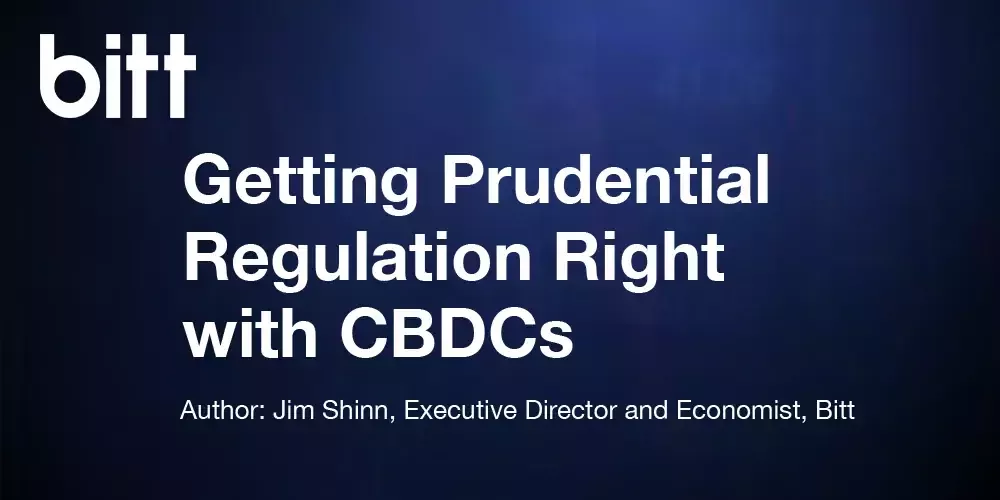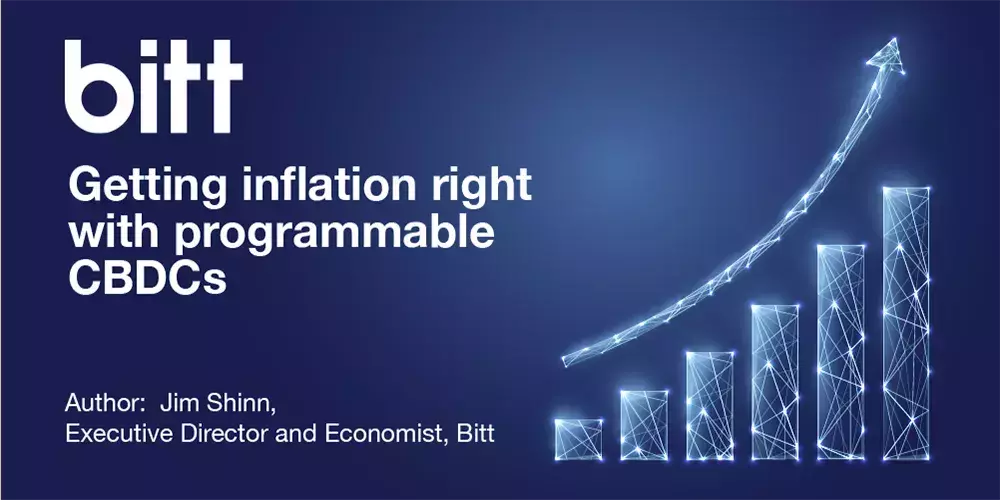Getting Prudential Regulation Right with CBDCs

As central bankers around the world hike interest rates to curb raging inflation, they are anxiously eying the impact on their banking systems. Data generated by central bank digital currencies (CBDCs) offer one solution to nervous prudential regulators.
On September 21, the U.S. Federal Reserve Board of Governors voted unanimously for an unprecedented 0.75% increase in the primary credit rate, thereby putting pressure on monetary authorities around the world to follow suite. But this relatively sudden pivot from COVID-era stimulation to restrictive monetary policy is stressing financial markets.
In the Global Financial Stability report issued on October 11, the International Monetary Fund warned that the surge in global borrowing costs threatens to unmask the financial system’s fragility. “With conditions worsening in recent weeks, key gauges of systemic risk, such as higher dollar funding costs and counterparty credit spreads, have risen. There is a risk of a disorderly tightening of financial conditions that may be amplified by vulnerabilities built over the years.”
Prudential regulators are concerned about the health of individual banks as well as systemic risk in the banking system. For example, while considering the impact of policy rate hikes, the Fed staff and Board of Governors in Washington keeps a close eye on the National Financial Conditions Index (NFCI) calculated by the Chicago Fed. The NFCI provides a comprehensive weekly update on U.S. financial conditions in money markets, debt and equity markets and the traditional and “shadow” banking systems. Similarly, prudential regulators around the world are monitoring every statistic and tool at their disposal in order to gauge the risks of further rate hikes.
Since the Great Financial Crisis of 2007-8, central banks have been imposing more and more reporting requirements on their financial institutions in order to head-off another meltdown in any of these markets. But the asset and liability information submitted by banks and other financial market participants to central bank regulators is usually dated, frequently incomplete, and sometimes simply incorrect. Translating this torrent of information into a meaningful index of risk for individual banks and the financial system overall involves a lot of guesswork for central banks. Moreover, economists’ attempts to statistically model the propagation of stress through the financial system are constrained by the relative infrequency of business cycle contractions.
Bitt’s CBDC architecture provides central bank economists and regulators with a wealth of near-real-time information on the CBDC balances of financial institutions. The central bank’s database of CBDC transactions includes the CBDC balances of individual banks and other financial institutions. Each bank has an aggregate treasury wallet, and each branch within that banking network has its own wallet. The central bank doesn’t need to wait for the bank to report its CBDC assets & liabilities; instead, the central bank staff can query the CBDC balances directly.
By assembling this data set for all regulated financial institutions, the central bank’s prudential regulators can create a financial stress “heat map” in order to focus their attention on further inquiries and possible preventative action. As the ratio of CBDC’s to total credit balances increases over time, this heat map will become increasingly accurate and timely. Each bank’s CBDC balance can be used to automatically calculate the bank’s liquidity coverage ratio (LCR), as required by the Basle III risk management guidelines.
Using this data set, the regulators can also derive a more accurate, timely index for overall systemic risk. With the heat map, they get insights into what banks (or non-banks) might trigger a financial panic before this propagates throughout financial markets.
“Flight to quality” in times of financial stress is often cited as a downside of introducing CBDCs, since households and businesses may prefer to hold central bank money rather than private bank money in a liquidity crisis. With the enhanced insights provided by programmable CBDCs, central banks can substantially mitigate the flight to quality risk, even as they navigate the risky path through tighter global monetary conditions.




